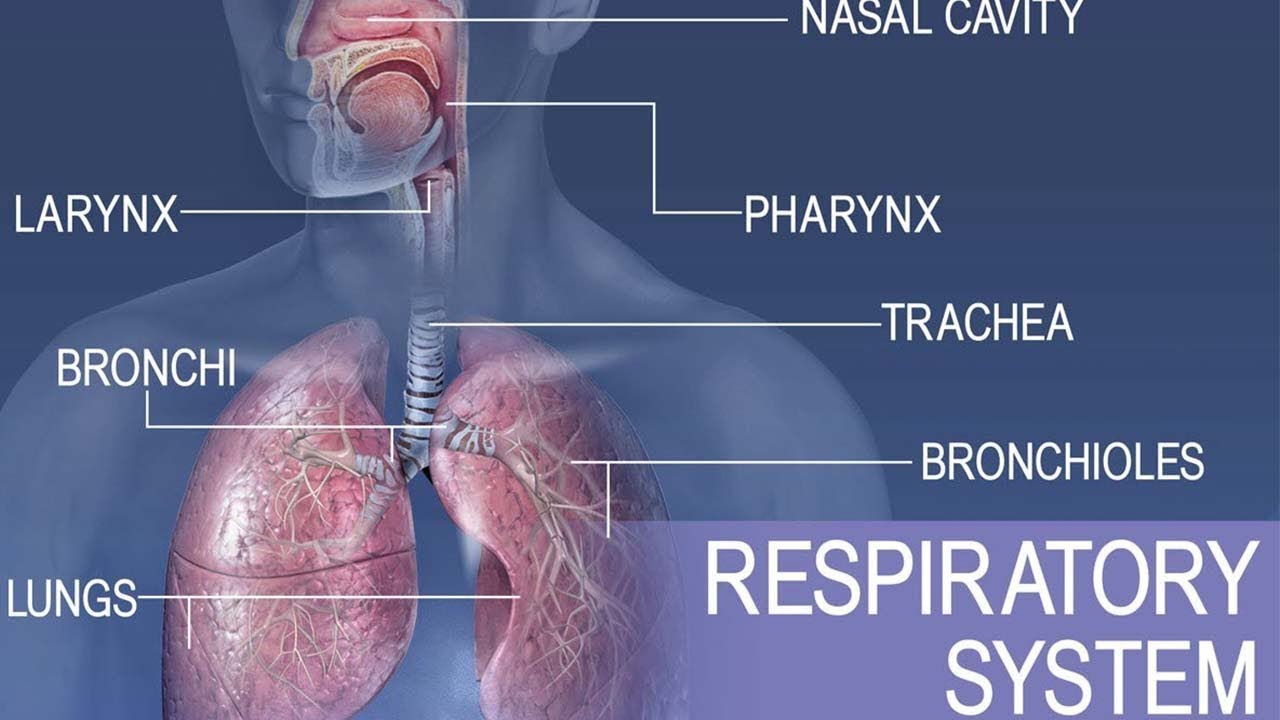LESSON 1: Medical Surgical Nursing Respiratory System Introduction Supplemental Lecture
Summary
TLDRThe video script delves into the anatomy and physiology of the respiratory system, highlighting its primary function of gas exchange. It discusses the structure of the upper and lower respiratory tracts and the risk factors for respiratory disorders, including allergens and environmental pollutants. The script also covers symptoms, diagnosis, and treatment of various respiratory conditions, emphasizing the importance of a detailed assessment to identify and manage these health issues effectively.
Takeaways
- 😷 The primary function of the respiratory system is gas exchange, which includes both oxygen intake and carbon dioxide expulsion.
- 🌪️ The respiratory system is divided into the upper respiratory tract, which includes the nose and pharynx, and the lower respiratory tract, including the trachea, bronchi, bronchioles, and alveoli.
- 🌬️ Respiratory disorders can be caused by various factors such as allergens, infections, trauma, and environmental pollutants.
- 🚭 Smoking is a significant risk factor for respiratory disorders, as it can lead to chronic obstructive pulmonary disease (COPD) and other lung diseases.
- 🤧 Common symptoms of respiratory disorders include difficulty breathing, coughing, wheezing, and chest discomfort.
- 🩺 Diagnosis of respiratory disorders may involve physical examination, listening for abnormal sounds with a stethoscope, and imaging tests like X-rays and bronchoscopy.
- 💊 Treatment can involve medications such as bronchodilators to open airways, corticosteroids to reduce inflammation, and antibiotics for bacterial infections.
- 🔍 Assessment of respiratory disorders includes identifying symptoms, their onset, and any precipitating factors, as well as the patient's medical history and exposure to potential irritants.
- 👂 Auscultation is an important diagnostic tool, where abnormal sounds like wheezing can indicate conditions like asthma or COPD.
- 👨⚕️ A family history of respiratory diseases or a history of exposure to infectious diseases can be significant in the assessment of respiratory health.
- 🌐 Travel to foreign countries may expose individuals to different respiratory illnesses, emphasizing the importance of understanding the global prevalence of such diseases.
Q & A
What is the primary function of the respiratory system?
-The primary function of the respiratory system is the exchange of gases, specifically the intake of oxygen and the expulsion of carbon dioxide.
What are the two main parts of the respiratory system mentioned in the script?
-The two main parts of the respiratory system mentioned are the upper respiratory system, which includes the nose, pharynx, and larynx, and the lower respiratory system, which includes the trachea, bronchi, bronchioles, and lungs.
What is the clinical significance of respiratory obstruction?
-Respiratory obstruction is clinically significant as it can lead to difficulty in breathing, which may result in various pulmonary disorders such as acute respiratory distress syndrome and chronic obstructive pulmonary disease.
What are some risk factors for respiratory disorders mentioned in the script?
-Some risk factors for respiratory disorders mentioned include the presence of allergens, exposure to environmental pollutants, smoking, and a family history of infectious diseases.
How is smoking related to respiratory disorders?
-Smoking is related to respiratory disorders as it can cause irritation and inflammation in the respiratory tract, leading to symptoms such as coughing, wheezing, and potentially chronic obstructive pulmonary disease (COPD).
What is the significance of hemoptysis in respiratory disorders?
-Hemoptysis, or the coughing up of blood, is significant as it can indicate serious underlying conditions such as lung cancer, tuberculosis, or severe infections, and requires immediate medical attention.
What does cyanosis indicate in the context of respiratory health?
-Cyanosis, which is a bluish discoloration of the skin and mucous membranes, indicates a lack of oxygen in the blood, which can be a sign of hypoxia or other serious respiratory conditions.
What is the role of a stethoscope in assessing respiratory disorders?
-A stethoscope is used to listen to the sounds of the respiratory system, such as breath sounds and any abnormal sounds like wheezing or crackles, which can help in diagnosing respiratory disorders.
What are some common symptoms of upper respiratory tract infections?
-Common symptoms of upper respiratory tract infections include coughing, sneezing, sore throat, and sometimes fever. These symptoms are often caused by viruses or bacteria.
What is the significance of clubbing of the fingers in respiratory diseases?
-Clubbing of the fingers, where the fingertips become enlarged and the angle between the nail and the fingertip increases, can be a sign of chronic hypoxic conditions or certain lung diseases, such as lung cancer or cystic fibrosis.
How can exposure to allergens affect the respiratory system?
-Exposure to allergens can trigger allergic reactions in the respiratory system, leading to symptoms such as sneezing, runny nose, itchy eyes, and difficulty breathing, which are common in conditions like asthma or allergic rhinitis.
Outlines

This section is available to paid users only. Please upgrade to access this part.
Upgrade NowMindmap

This section is available to paid users only. Please upgrade to access this part.
Upgrade NowKeywords

This section is available to paid users only. Please upgrade to access this part.
Upgrade NowHighlights

This section is available to paid users only. Please upgrade to access this part.
Upgrade NowTranscripts

This section is available to paid users only. Please upgrade to access this part.
Upgrade Now5.0 / 5 (0 votes)





